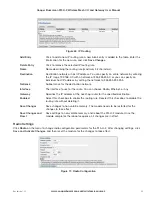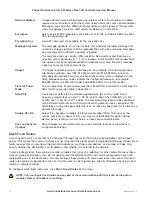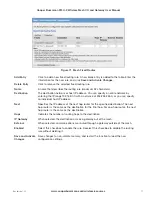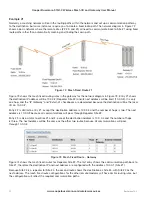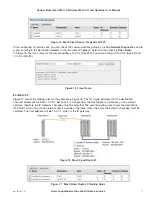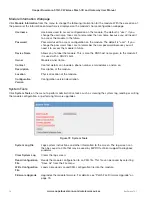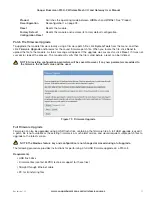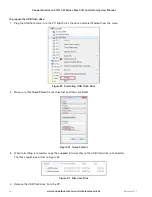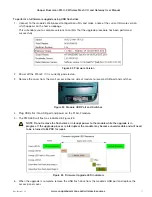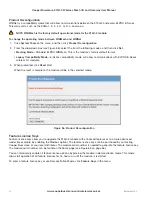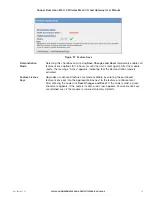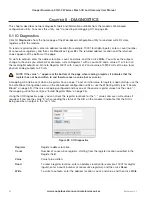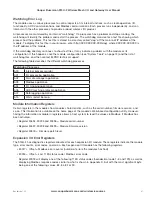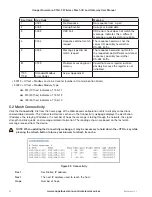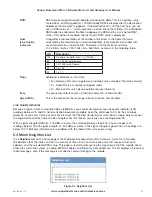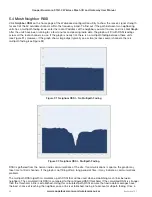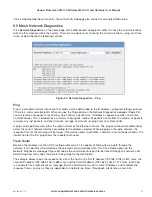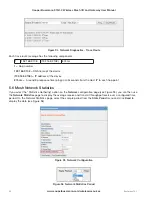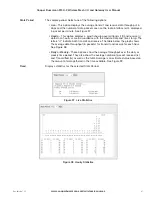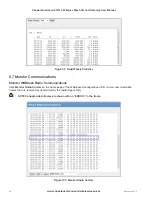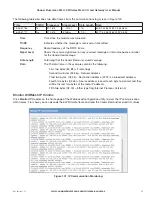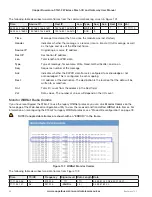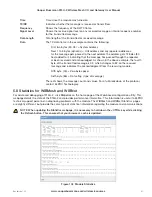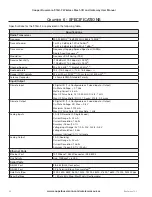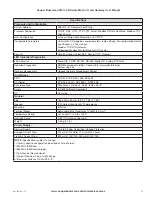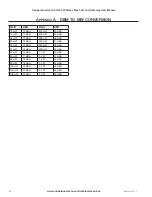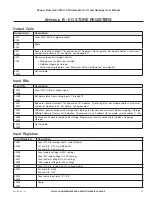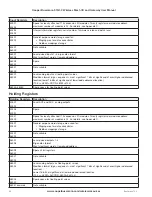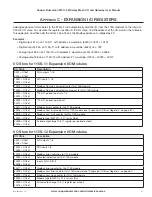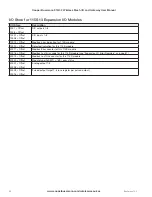
www.cooperbussmann.com/wirelessresources
Cooper Bussmann 915U-2 Wireless Mesh I/O and Gateway User Manual
83
Rev Version 1.2.2
RSSI
RSSI (received signal strength indicator) measured in dBm. This is a negative value
scaled from –40 dBm (good) to –120 dBm (bad). RSSI is displayed for the destination
addresses that are direct neighbors. If the destination IP is not the next hop, you will
see an RSSI value of “~” which indicates no direct link to that station. If the Multipath
RSSI option is enabled on the Mesh webpage, the RSSI will be a calculated RSSI
value. If this option is disabled, the last known RSSI value is displayed.
Qual
(Link Quality
Indicator)
A logarithmic representation of the number of bit errors in the frame that were
corrected by the forward error correction algorithm. Each data bit is encoded with
seven forward error correction bits. Therefore, a 100-byte frame contains
100 x 8 bits / byte x 7 FEC bits / bit = 5600 bits, as shown in the following table.
LQI
Description
100
No Errors (or better than 1 in 100,000)
80
1 in 10,000 raw bit errors
60
1 in 1000 raw bit errors
40
1 in 100
20
1 in 10
Flags
Additional indications for this entry:
•
G
= Gateway (this unit is a gateway, providing access outside of the radio network)
•
F
= Fixed (this is a manually configured route)
•
E
= External (this unit a device outside the local network)
Iface
The connection interface (er0 = Ethernet radio, eth0 = Ethernet LAN).
Age (H:M:S)
This is the timeout of the message in hours, minutes, and seconds.
Link Quality Indicator
Because a typical frame is around 80 bytes (4480 bits), you should not typically see link quality indicator (LQI)
readings between 75 and 99. Communication becomes unreliable when the LQI drops to 30. As the LQI drops
below 25, nearly every frame has so many bit errors that the FEC (forward error correction) is longer able to recover
the original data and the frame will be corrupted. For this reason, you rarely see a reading below 25.
With a signal strength (RSSI) of –100 dBm or better, the LQI should always read 100. You can expect LQI
readings below 100 with signal strength of –105 dBm or worse. If the signal strength is good and LQI readings are
below 100, it indicates interference or a problem with the radio of the unit you are using.
5.3 Mesh Neighbor List
Click
Neighbor List
on the home page of the Web-based configuration utility to show a current list of module
IP addresses that the radio can hear, the amount of time since a communication was last received from each
address, and the calculated RSSI value. This page is useful for discovering the signal levels that the module has to
other sites within the system, including ELPRO modules on different system addresses. The list displays all received
radio messages, even if the message is not directly communicating to the module.
Figure 90 Neighbor List

